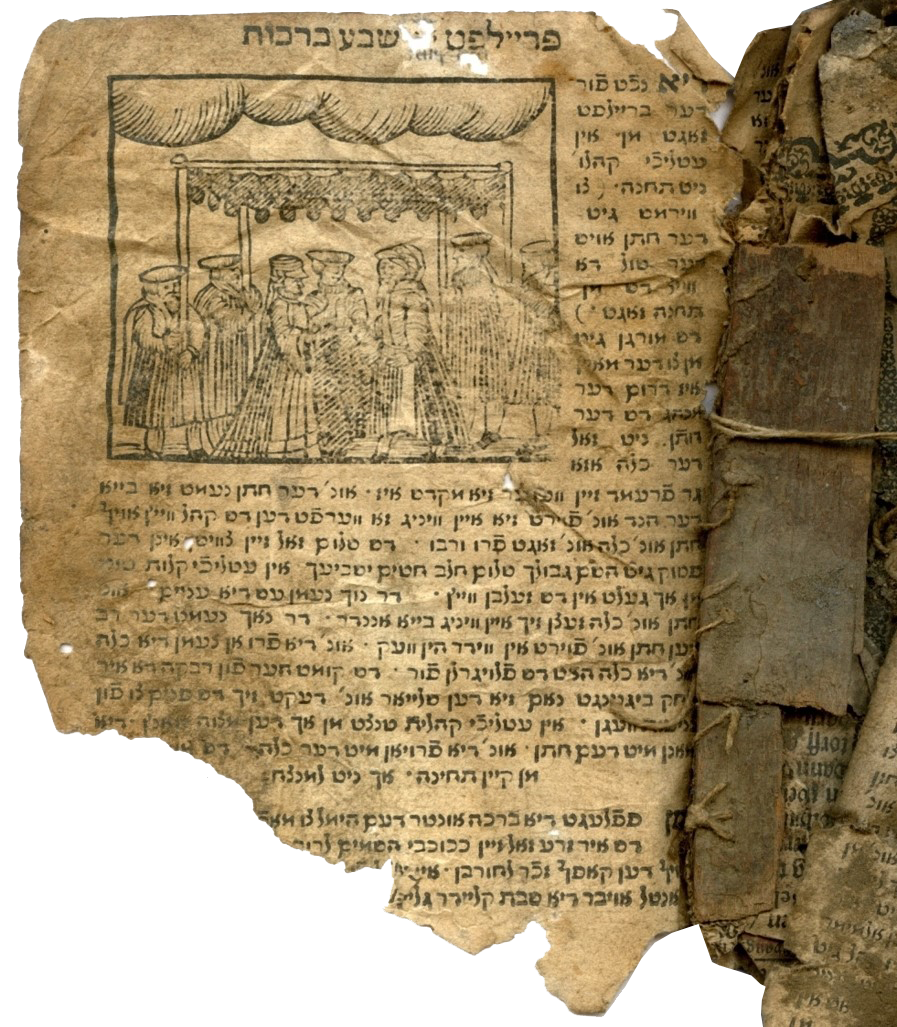Fragment of a Book
From the Middle Ages until the 19th century, bible translations and rabbinical narrations were published in Yiddish specifically for women. Since Jewish women were not called up to read from the Torah in the Synagogue, reading of biblical texts in Yiddish was sufficient, while the sacred Hebrew language remained reserved for the men’s study of the bible. The devotional literature aimed at women also included illustrated books on Jewish customs.
Title: Fragment of a Book with a Wedding Scene
Date: 18thcentury
Material: Paper, printed
Dimensions: 26.5 x 18 cm (10.4’’ x 7’’)
Signed: unknown
Creator: unknown
Sponsor: unknown

The page shown here most likely comes from one of the illustrated Yiddish books which were widely spread in German-speaking regions at the time and explained specific Jewish customs. The page is printed in a font popular at the time amongst Yiddish publications, the so-called “Waibertaitsch” (standard German: Weiberdeutsch). The name, meaning “German for women”, refers to the target audience of this literary genre, even though men demonstrably read these books as well. The page is titled “Freiluft [und] Schewa Brachot”, which translates to “Wedding and seven blessings”.
The word “Freiluft” (instead of the standard German “Hochzeit”) was used as a synonym for wedding by German-speaking Jews, with the words literally meaning “free air” and referencing the wedding canopy used during Jewish weddings, which could often be placed outside. Seven blessings are spoken to the bridal couple during the wedding ceremony.
The woodcut depicts the bridal couple with another person – likely a Rabbi – beneath a wedding canopy, its four rods being held up by four men.
Further Reading:
Article by Dovid Katz: https://yivoencyclopedia.org/article.aspx
/Language/Yiddish#id0eztae from The YIVO Encyclopedia for Jews in Eastern Europe, last accessed November 15th, 2019.
